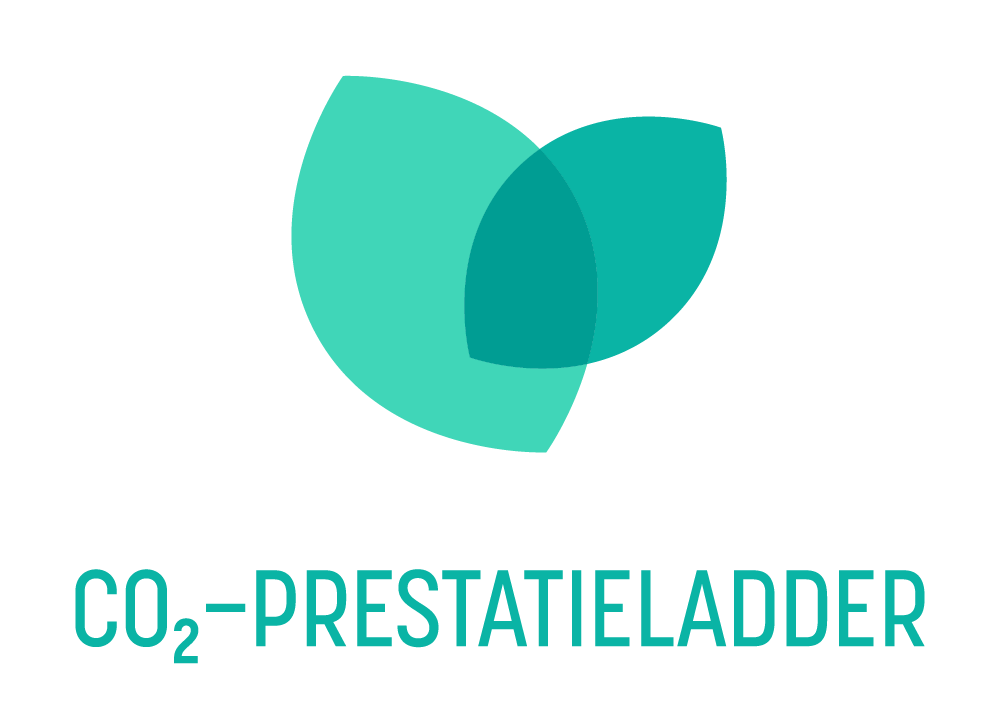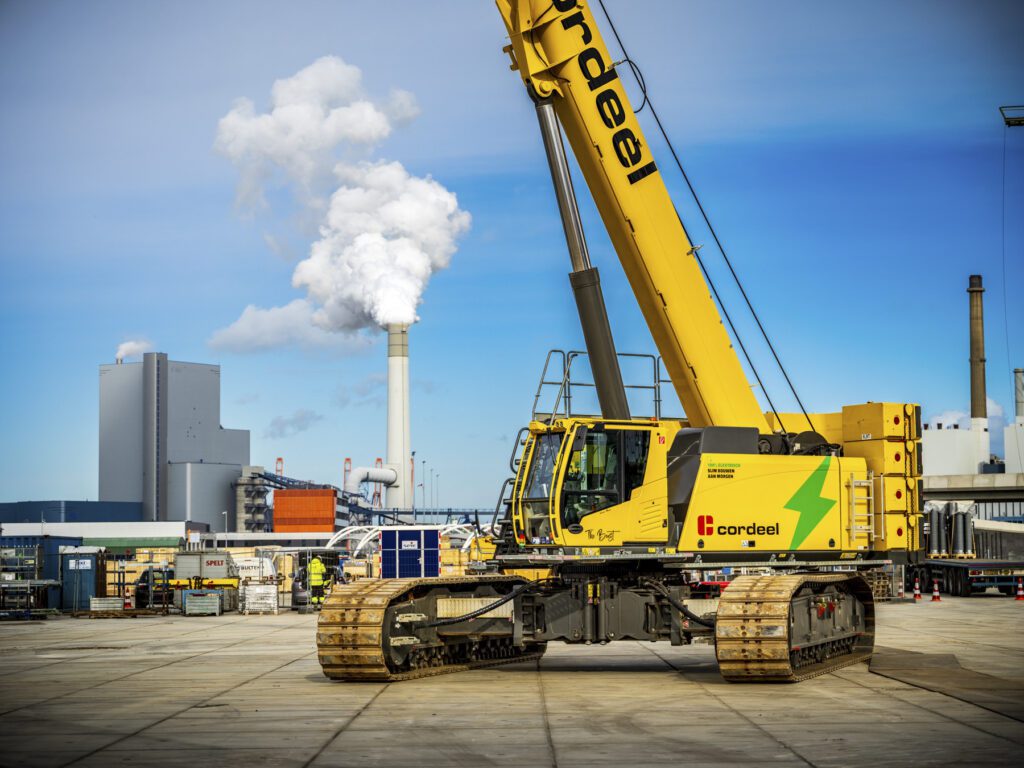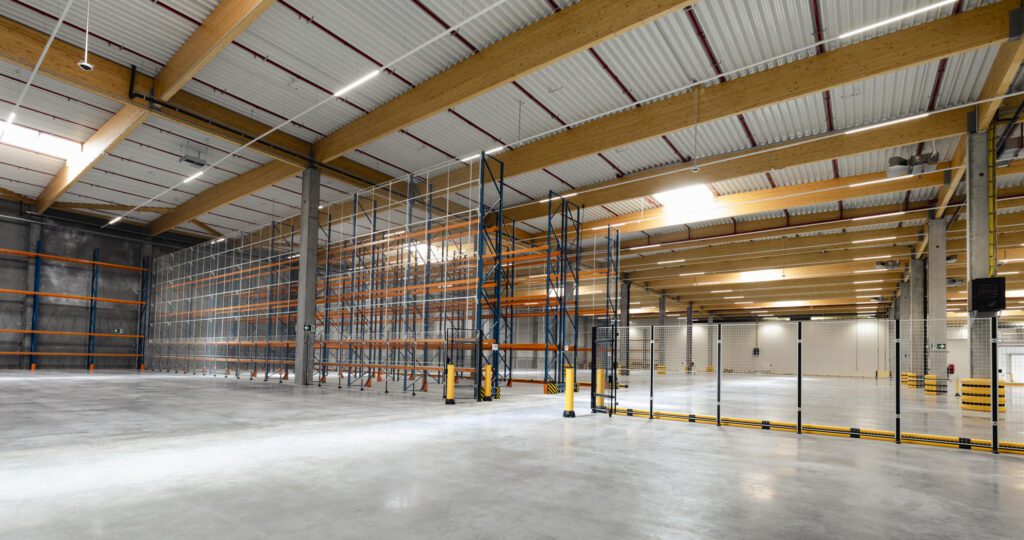GHG emissions

What do we report on?
Our GHG emission reporting covers scope 1 & 2 emissions as well as business travel (scope 3) all companies of the Cordeel Group in Belgium, the Netherlands, Hungary and Bulgaria.
This organisational boundary is larger than what we report on in the framework of the CO₂ Performance Ladder, which is currently focused on the operations of Cordeel zetel Temse as well as the companies located on our site “De Zaat” in Temse, Cordeel zetel Hoeselt and Cordeel Nederland.
The emission factors we use to calculate our carbon footprint are the well-to-wheel emission factors that we use for the CO₂ Performance Ladder in Belgium and the Netherlands as well.
The calculation of scope 1 & 2 is linked to actual consumption of the companies and based on invoices or other proof. We strive for a calculation that is exact as possible and assume that we achieved an accuracy of 95%.
E1, E1-6, DP AR 39b
The number of companies included in the boundary of the scope 1 & 2 calculation is increasing every year. Where possible, we try to calculate the emissions of newly-added companies also to previous years to show a realistic trend. Currently, only C-serbia & Imtech Engineering Poland are not included. Companies representing 97.9% of our revenue are reporting on scope 1 & 2.
In 2024, we also calculated an important part of our scope 3 emissions: purchased goods & services as well as waste in operations.
No carbon credits have been purchased. We are currently focusing completely on reducing our footprint without using a carbon removal or storage approach.
We have not yet created a transition plan for climate change mitigation, but plan doing so in 2025.
Currently, we’re not handling an internal carbon pricing scheme.
E1, E1-7, DP 58 || E1, E1-1, DP 14 || E1, E1-8, DP 63a
What are scope 1 emissions?
Scope 1 CO₂ emissions are direct greenhouse gas emissions that come from sources owned or controlled by a company, such as from our own vehicles, construction equipment or heating and cooling.
What are scope 2 emissions?
Scope 2 emissions are indirect greenhouse gas emissions that come from the generation of purchased electricity, steam, or heat consumed by a particular company or organisation. These emissions are generated by another entity, such as a utility company, but are a result of the energy consumed by the reporting company.
What are scope 3 emissions?

CO₂ Performance Ladder
The CO₂ Performance Ladder is a sustainability tool and certification scheme that empowers companies to reduce CO₂ emissions by implementing practical measures, fostering innovation and sharing knowledge. It is actively used as a criterion for awarding public contracts in the construction industry.
The idea behind the tool is to encourage the entire sector to establish a continuous management system for reducing CO₂ emissions, rather than working solely on project-based measures. As a result, the ladder delivers energy and cost savings for the company.
In 2021, the companies located at our site in Temse got certified at level 3 and we have been reporting on our CO₂ emissions and the progress since then. In 2023, Cordeel Nederland and Cordeel zetel Hoeselt were added to the organisational boundary.

GHG emission reduction over the years
Our efforts in reducing our carbon emissions in scope 1 & 2 over the years is shown here.
In 2024 we achieved an absolute reduction of -4,452 tons CO2 (-33,8%) and an intensity-based reduction of -55.5%, compared with our base year 2021 for scope 1 & 2.
The number of companies included in the boundary of the scope 1 & 2 calculation is increasing every year. Where possible, we try to calculate the emissions of newly-added companies also to previous years to show a realistic trend.
We’re only reporting on scope 2 market-based emissions.
E1, E1-3, DP 29b || E1-4, DP 34a + 34b
E1, E1-6, DP 44, 48a, 49b, 51, AR 55
| Year | Scope | CO2-emissions in tons | Absolute reduction to base year 2021 (in tons & %) | Revenue in mio € of companies in boundary | % of total revenue | Intensity: CO2 emissions per mio € revenue | Intensity reduction to base year 2021 |
|---|---|---|---|---|---|---|---|
| 2021 | 1 & 2 | 13,169.8 | - | 645.35 | 85.2% | 20.41 | - |
| 1 | 11,158.9 | - | 17.29 | - | |||
| 2 | 2,011.0 | - | 3.11 | - | |||
| 2022 | 1 & 2 | 11,385.7 | -1,784.1 (-13.5%) | 823.01 | 87.6% | 13.83 | -32.2% |
| 1 | 9,692.0 | -1,466.9 (-13.1%) | 11.78 | -31.9% | |||
| 2 | 1,693.7 | -317.3 (-15.8%) | 2.06 | -33.8% | |||
| 2023 | 1 & 2 | 11,197.1 | -1,972.7 (-15.0%) | 876.13 | 93.4% | 12.78 | -37.6 |
| 1 | 9,623.1 | -1,535.8 (-13.8%) | 10.98 | -36.5% | |||
| 2 | 1,574 | -436.9 (-21.7%) | 1.80 | -42.2% | |||
| 3 | 231,043.9 | - | 770.43 | 83% | 299.89 | - | |
| 2024 | 1 & 2 | 8,717.8 | -4,452 (-33.8%) | 969.52 | 97.9% | 9.09 | -55.5% |
| 1 | 8,108.9 | -3,050 (-27.3%) | 8.45 | -51.1% | |||
| 2 | 608.9 | -1,402.1 (-69.7%) | 0.63 | -79.6% | |||
| 3 | 279,083.7 |
GHG emissions per scope
-
Scope 18108.9tons
-
Scope 2608.9tons
-
Scope 3279083.7tons
GHG emissions 2024 by country
scope 1 & 2
E1, E1-6, AR 41
| Country | CO2-emissions |
|---|---|
| Belgium | 7,062.2 |
| Netherlands | 961.7 |
| Bulgaria | 698.8 |
| Hungary | 1.1 |
GHG emissions 2024 by division
scope 1 & 2
E1, E1-6, AR 41
| Division | GHG emissions in tCO2 | % of total |
|---|---|---|
| C-construct | 4,691.16 | 53.8 % |
| C-tech | 2,768.2 | 31.8% |
| C-production | 477.6 | 5.5 % |
| C-living (Vita groep) | 374.48 | 4.3 % |
| C-innovation | 283.52 | 3.3 % |
| C-energy | 10.45 | 0.1% |
| Service Centers | 112.39 | 1.3% |

Scope 3
We analyzed the various categories of scope 3 emissions and concluded that purchased goods and services is the main driver of our emissions.
We used a spend analysis of companies that represent 88,4% of the Cordeel Group’s turnover and focused on the Top 80% suppliers, based on the accumulated spending.
In order to calculate the emissions, we used the spend-based-methodology: each supplier is based to a NACE code and category. The spending in Euros is linked to an emission factor from the providers ADEME or Exiobase.
We are aware that this method is not the most exact, but it represents a great starting point to dive deeper into our scope 3 emissions in the next months.
Additionally, we have reached out to our Top 50 suppliers for our most material impacts (e.g. concrete, steel, facades, ground works, demolition,..), asking them for more detailed information. We will use their feedback for a more thorough scope 3 analysis by the end of 2025 which will be the basis for a scope 3 target as well.
We will then also revisit our 2023 scope 3 target and apply our deepened understanding. Currently, there are too many uncertainties to compare the results of the two years, which is why we are not showing any reduction/increase.
To avoid double-accounting between the various Cordeel group companies, we report only on the external suppliers in 2024.
The companies this calculation is based on are: Cordeel zetel Temse, Cordeel zetel Hoeselt, Cordeel Nederland, Imtech, C-wood, C-metal, C-concrete, Cordeel Amsterdam
| Category | GHG emission in tCO2 |
|---|---|
| 1. Purchased goods and services | 277,551.79 |
| 5: Waste generated in operations | 758.5 |
| 6: Business Travel | 106 |
| 9. Downstream transportation | 667.37 |
| Grand total | 279,083.66 |
GHG emission reduction targets
| Reporting year | Measure | Status |
|---|---|---|
| 2023 | Report on scope 1 & 2 of complete Cordeel group | 2024: All companies in BE, NL, HUN & BG --> 97.9 % of revenue covered |
| Report on the three most material scope 3 emissions | 2024: Spend-based PGS for majority of companies, representing XX% of revenue | |
| 2025 | Report on scope 1-3 of complete Cordeel group | |
| Define scope 3 target | Currently mostly spend-based which only allows for qualitative reduction targets | |
| Sustainable procurement for most material purchase categories | 2024: Top 50 suppliers were asked to report on scope 3 on our projects | |
| 2026 | Receive certification for highest level of CO2-performanceladder | Framework changes: Level 5 will become level 3 with several changes which we need to further investigate |
| 2027 | Absolute reduction of scope 1 & 2 by 57,5% (compared to 2021) | 2024: - 33,34% absolute reduction |
| 100% of passenger cars in Belgium and the Netherlands are electric | 2024: Belgium 64% | |
| 2030 | Absolute reduction of scope 1 & 2 by 72% (compared to 2021) |

Energy consumption
Energy consumption in MWh from fossil fuels
E1, E1-5, DP 38a, 38b, 38c, 38d
| MWh | |
|---|---|
| Coal and coal products | 0 |
| Crude oil and petroleum products | 22,430.5 |
| Natural gas | 2,693.18 |
| Other fossil sources | 1,969.81 |
| Total | 27,093.49 |
Energy consumption in MWh from renewables
E1, E1-5, DP 37c
| MWh | |
|---|---|
| Consumption of purchased or acquired electricity, heat, steam, and cooling from renewable sources | 9,027.29 |
| Consumption of self-generated non-fuel renewable energy | 1,954.46 |
| Fuel consumption from renewable sources | 1,232.42 |
| Total | 12,214.42 |
Emission-free construction sites
Fossil fuels consumed on our construction site account for 17.1 % of our total CO₂ emissions. When zooming into our C-construct division, fossil fuels even account for 26.5 % of their CO2 emissions and are therefore an important driver of our scope 1 & 2 emissions.
To achieve our ambition of emission-free construction sites, we focus on their electrification. To achieve this, we apply various decarbonisation levers
E1, E1-1, DP 16
Grid connection
Where available, we use a grid connection with as much power and as early as possible.
Measuring consumption of electricity
With our C-scan sensors, we monitor electricity consumption of the main consumers on construction sites.
The sensors offer a transparent view of the electricity needed for tower cranes, dewatering of construction pits, and on-site offices, depending on the time of the year and phase of the works.
This provides us with the insights we need to take the right reduction measures.
Mobile energy boxes on construction sites
Since construction sites tend to have a limited or even no grid connection, this missing capacity is supplemented by diesel-powered generators. These have a negative impact on several environmental aspects such as noise, dust, nitrogen, ineffective fuel use, and high CO₂ emissions resulting from the use of fuel.
We noticed that we often use diesel generators with a capacity higher than required. The main reason is that tower cranes have power peaks for a very short period of time for which the capacity is dimensioned.
Our thorough measuring helped resize our mobile battery containers that we started to roll-out in 2023. C-battery is engineering and assembling these battery containers, based on lithium-ion technology and available in two versions, both built in 10ft containers: 100 kWh & 215 kWh.
Eventually, these mobile batteries will make generators obsolete and have a major positive impact on the environment: less noise, less smell, less CO₂ and nitrogen emission
Electric construction equipment
Apart from using mobile energy boxes to replace generators, we also invest in electric machinery.
C-rental purchased five Volvo L25 Electric Wheel Loaders, which have the same power as a diesel-powered wheel loader but produce no emissions.
Furthermore, C-rental has integrated 100 electric scissor lifts and telescopic boom lifts into its fleet.
Use of biofuels
HVO100 is a synthetic biofuel under the EN15940 standard, consisting 100% of waste vegetable oils treated with hydrogen (HVO = ‘Hydrated Vegetable Oil’). It emits 89% less CO₂ over the entire life cycle (‘well-to-wheel’) compared to regular diesel.
Cordeel Nederland uses HVO 100 for every construction site.
We consider HVO 100 to be a transition fuel towards full electrification of construction sites.
Transport by water
The strategic location of Cordeel Group headquarters alongside the Scheldt river provides us with the opportunity to use the river for our transportation requirements. This is not only efficient but also lowers our scope 3 emissions and helps us avoid the congestion of Belgian and Dutch highways.
We also rely on water transportation to deliver raw materials for our concrete plant and the soil required to construct our energy hill in Temse.
Most of the prefab elements used to build the Amazon warehouse on the Blue Gate site in Antwerp were transported via water and picked up at our dry dock.
In Rotterdam, we’re currently building “De Boompjes” which is located right on the Maas river with the iconic Erasmus bridge in plain sight. By using water transportation, we were able to reduce 350 instances of traffic along congested roads in Rotterdam.
This approach is the ideal solution for inner-city buildings on the water. Not only did we significantly reduce truck traffic for residents and passers-by, but it also allows for the efficient use of the vessel to expand the limited construction site.
Greening the fleet
Fossil fuel plays a significant role in driving our CO₂ emissions. The fuel for our fleet accounts for 71.3 % of our total CO₂ emission, a mere 6,217 tons. This makes the fossil fuel for the fleet the major driver of our CO2 emissions.
Reducing these emissions is our main lever to decarbonise our scope 1 & 2 GHG emissions.
E1, E1-1, DP 16
Charging poles
We’re providing charging poles at all of our locations and as well at the homes of our employees that drive electric vehicles.
Our HQ in Temse has more than 75 charging poles available.
Powerstation, our charging pole supplier, is constantly expanding its range of charging poles available.
Their latest generation of charging stations will allow users to charge their vehicles without the need for a charge card or app thanks to the automatic authentication technology.
Fully electric car policy
In 2022, we have adapted our car policy to exclusively use 100% electric passenger cars to reduce our dependence on fossil fuels and lower our CO₂ emissions. Since then, no hybrid or fossil fuel powered passenger cars were ordered.
However, one of the main challenges we face is the speed of delivery of the vehicles and the availability of suitable electric vans with a sufficient range, especially for the technicians at Imtech.
Therefore we ordered ten ID. Buzz by Volkswagen to test for which activities they would be the most suitable. We expect that these vans will help us decarbonising our fleet further and we will additionally explore the electrification of the smallest category of light commercial vehicles.
